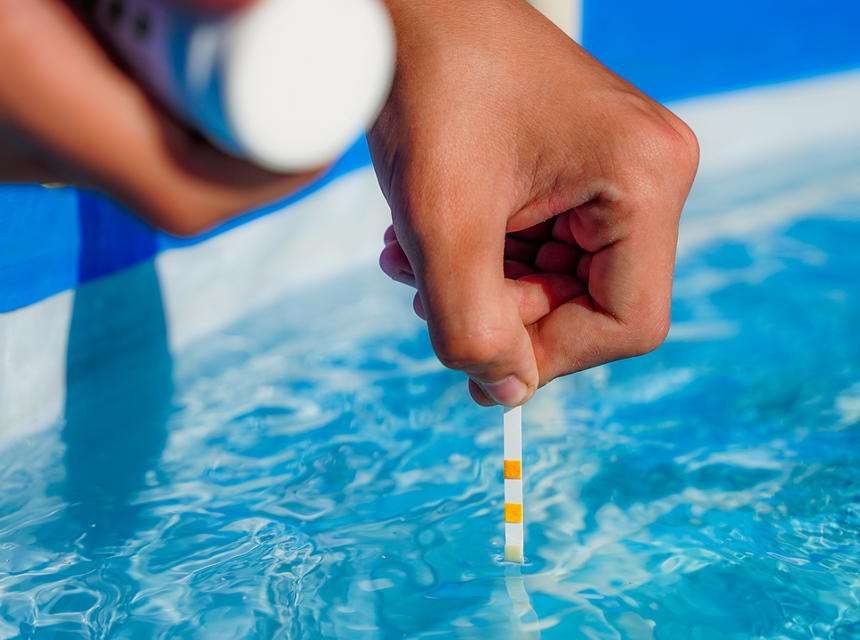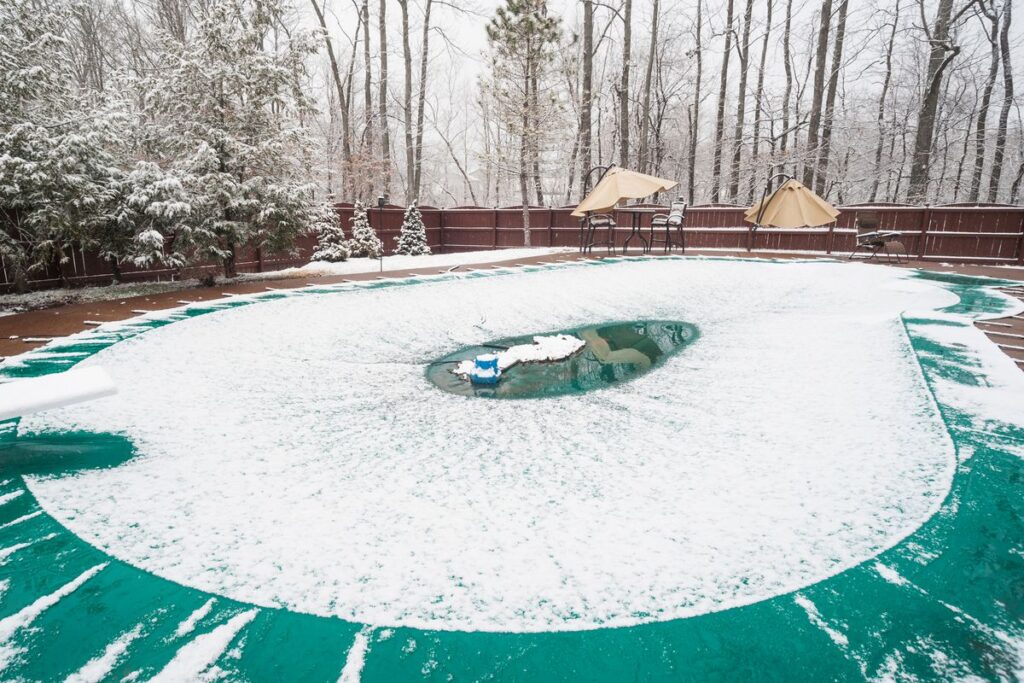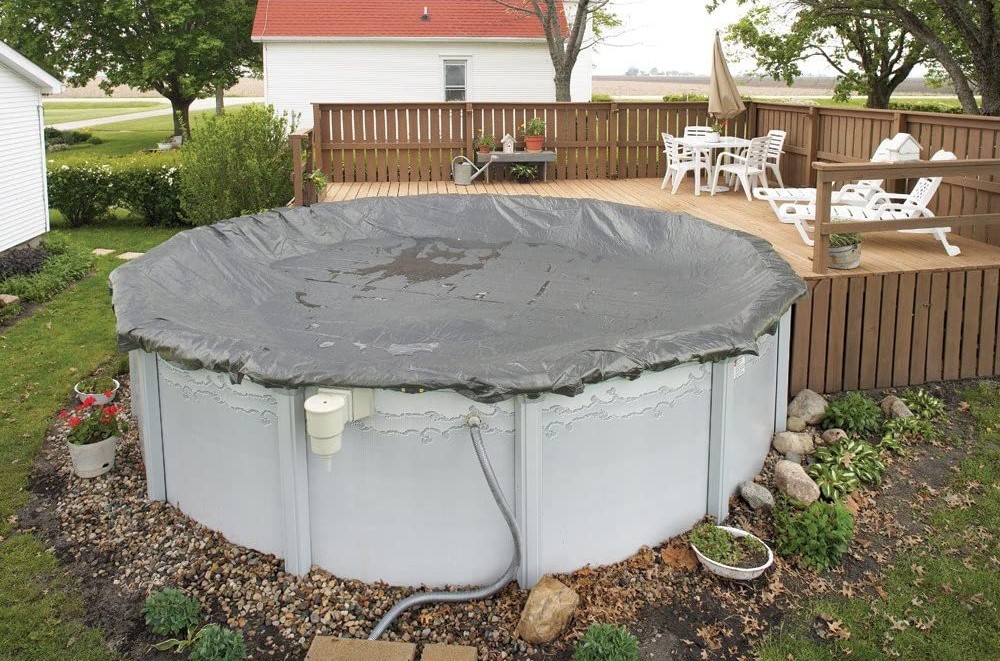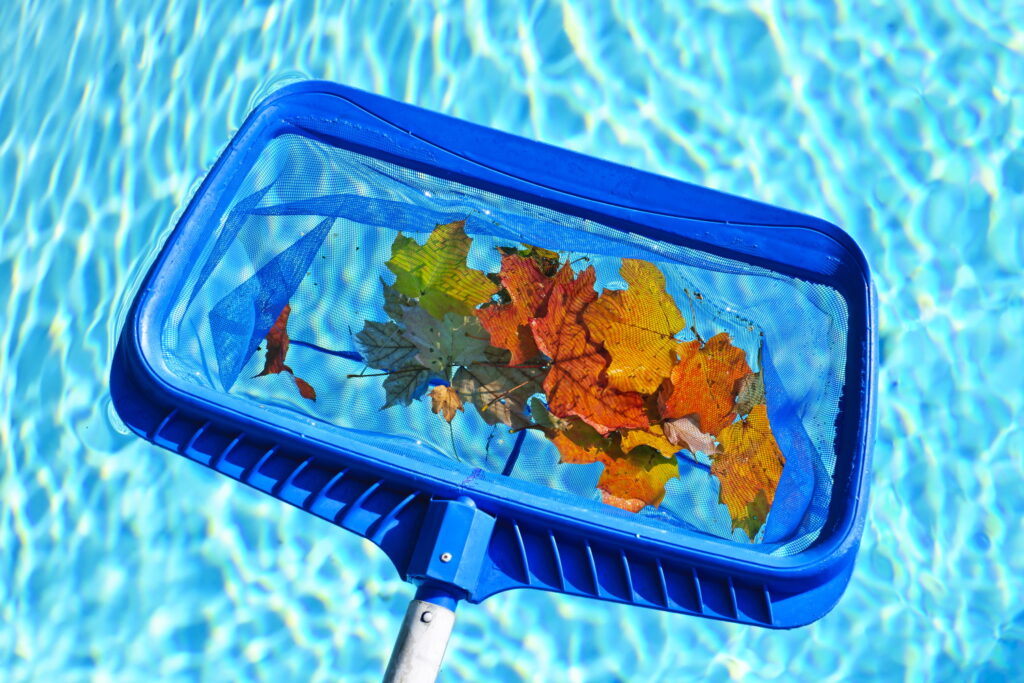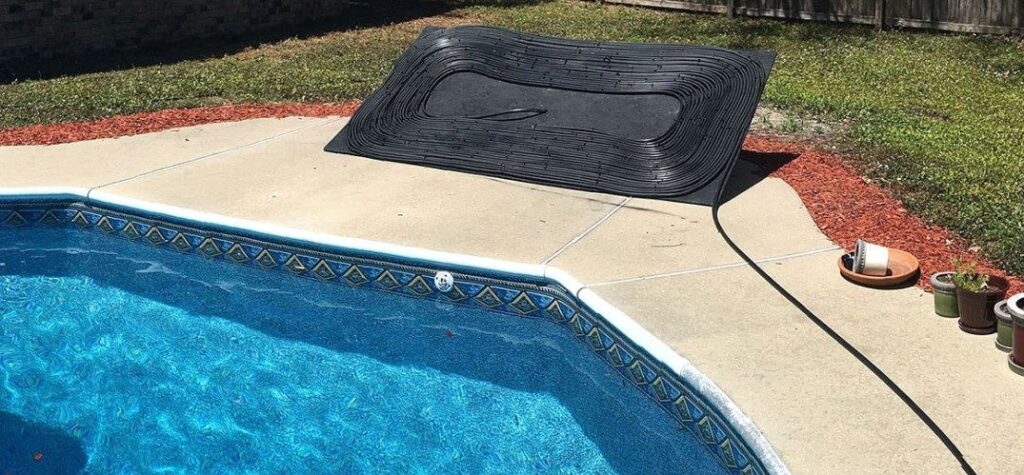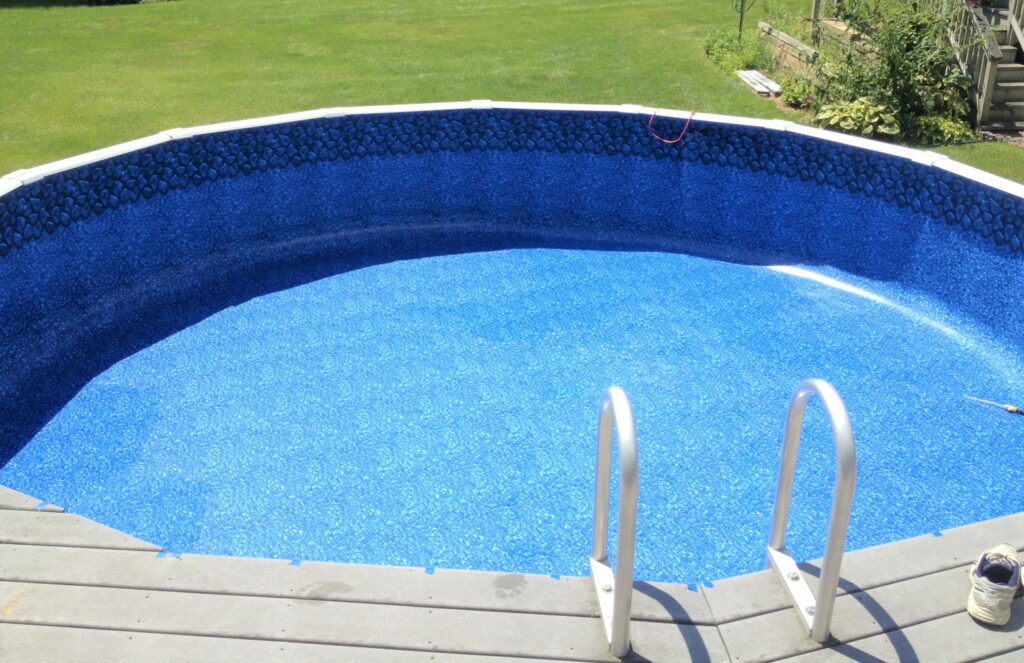The cost of building an inground pool ranges from $50 to $125 per square foot. With the average swimming pool being about 600 square feet, you’re looking to spend about $30,000 on the lower side. Building an above-ground swimming pool is significantly cheaper and typically costs less than $10,000. You could also pay less depending on the size and the materials you choose to use. Another benefit is there is no hydrostatic pressure above ground, so if you ever choose to drain your pool for repairs, cleaning, or a paint job, there is less risk of damage.
Nevertheless, before you can place or build your pool on the ground in your backyard, you have to level the ground. Often people have to dig a few inches into the ground to make this possible, but you can avoid it. So how do you level the ground for a pool without digging? Find out below.
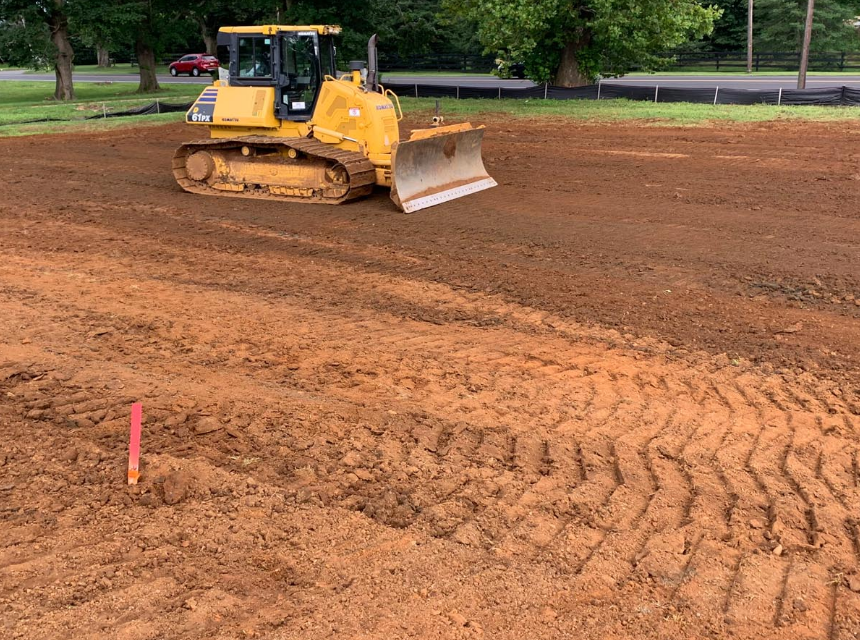
Land grading is the term your landscaper – if you have one – will use for setting up your backyard for the new pool. More specifically, land grading is redistributing soil and other materials such as sand or gravel to alter the natural surface.
One example of land grading is if the soil in your backyard has poor drainage and a landscaper alters the grounds, so the water flows to the edge of the property or into a drain. Of course, if the backyard has not been graded properly, you might encounter pools of stagnant water after rain.
Grading is important for many permanent construction jobs such as houses, and often it’s necessary to dig into the ground. That said, you should be able to get around the digging part if you’re installing an above-ground swimming pool. This is especially true if your yard was well-graded, to begin with, although that might have changed over the years.
Before you can find out how to level the ground for above-ground pools without digging, you must understand just how important the exercise is. So why do you even need to level the ground for a pool? Can’t you just place it in your backyard as it is? The answer to the last question is no, and here are a couple of the reasons.
The depth of the pool may be uneven in several places. With most pools, the floor is graded to be flat or to have one shallow end and a deep end. However, if a pool is placed on uneven grounds, some spots will be deeper than others.
This is potentially dangerous, especially for people who can’t swim. They might get into the pool thinking it should be fine since they’re on the shallow end. However, if one spot is deeper than the rest of the area, it could be a problem.
Additionally, if you don’t level the ground, you may not notice the presence of sharp objects like stones or glass shards. You might get away with it, depending on the pool materials. However, if you’ve bought an inflatable pool, chances are you’ll poke a hole or several through the floor and have to spend more money to fix it.
Also, even if you’re not dealing with an inflatable pool, stones, and sharp objects can poke a hole into the pool liner, and it will start leaking.
Another potential problem is uneven pressure on the walls, especially if the pool is on a slope. Usually, the water pressure is shared among all four walls in a rectangular or square pool. However, if you place the pool on a slope, one wall will have to bear the brunt of the water pressure, which can lead to damage.
Also, before you put your ground leveling skills to the test, there are some preparation measures you have to take, as highlighted below.
If you have a particularly large property, you may need to look for the right spot for the pool. Remember, swimming pools typically cannot be moved once they’re filled with water. Also, make sure to choose the flattest spot possible. On the other hand, if you have a smaller property, you may not have much of a choice in the matter.
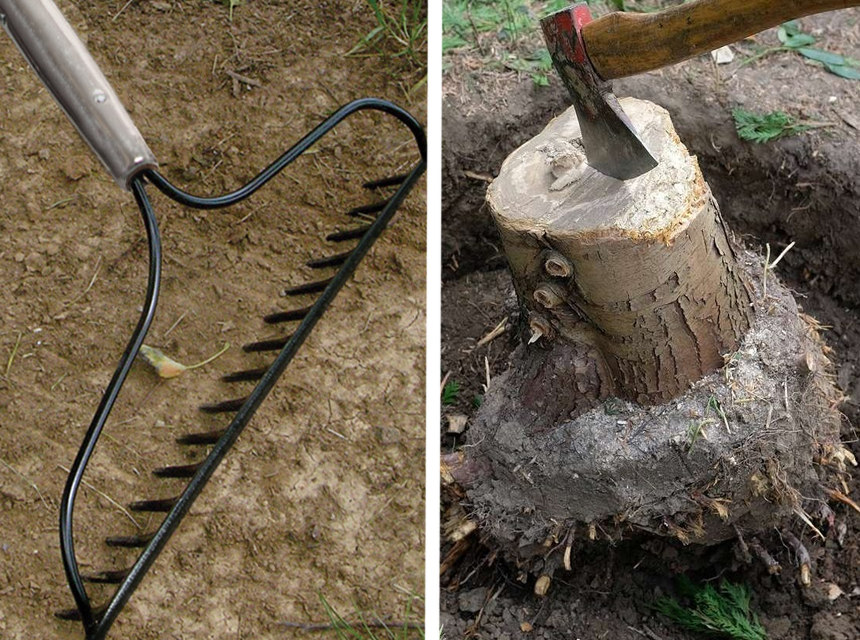
Finding the right location is followed by cleaning it. Are there any large pieces of debris like fallen branches, pieces of glass, or rocks? Get rid of them. The same applies to tree stumps, and in this case, you might be forced to do a little digging, especially since tree stumps can lead to an uneven pool floor and cause damage.
If there are no tree stumps, move on to getting rid of the grass. Placing a tarp over the grass kills it, which makes it easier to pull it out of the ground.
Once you’re done with the grass, inspect the area to see if you might have missed anything. It’s also a good time to check for any obvious depressions so you can fill them in first as you’re leveling the ground.
It’s safe to say that not all depressions on the ground will be apparent, which is why you also have to test the area manually. The good news is you don’t need a lot of expensive equipment. You can make do with a long 2×4 straight plank. For a circular pool, having one as long as the radius would be best. As for square or rectangular pools, planks that can extend from the middle to the sides are ideal.
You might also need a long level, at least 48” long. Placing this plank and level combo on the ground should make it obvious where the soil is uneven.
Of course, you don’t just stop at testing the area. You then need to proceed to fill up the holes. You’ll need extra dirt for the process that you can move from other parts of your property. However, sand and gravel are great alternatives since you’re trying to avoid digging. Also, buying soil is an option.
Onto the issue of how to level the ground for an above-ground pool without digging. You have a few choices, each with its perks and downsides. Examples include using crushed rock, masonry sand, and others. So here’s how you use each of them.
One of the more secure methods for leveling the ground is using crushed rock which is even used as fill material in construction. It can also provide a secure base for the heavy pool if done right, and often people choose limestone since it’s easily compactable.
However, before you can use the crushed rock, you need to tamp the ground that’s going to be beneath it. Despite how solid the ground may look, soil can wriggle under pressure. As such, if you place your pool on the untamped ground, the soil will wriggle, causing the foundation to move around. Ultimately this can lead to the collapse of the structure.
Tamping the dirt beforehand will make it a more stable base for the pool. Use your plank and level tool to confirm the ground is still level. If not, you can tamp down on the high points a little more. You can also use a rake to move around the dirt for a more even surface.
After that, it’s time for the crushed rock. Lay it down on the pool area and redistribute it with your rake so it’s flat. Your plank tool should come in handy again. You finish up by tamping the rock as hard as you can. If the area is level after all that, you should be done.

Land grading is totally okay for those who don’t want crushed rock as their pool base, although it’s not the most stable of bases. The process is the same as when you’re setting up the ground for crushed rock without the ending. You tamp the ground on your property as much as possible, and you can even add extra dirt if you have some.
Rake the area to redistribute the dirt where necessary. You can even pour some water to make the area more compactable. Be sure to check the level and fill in low spots where necessary as you go along. After that, roll the soil, and you can even water the ground and tamp it one last time before laying your pool.
You can also use masonry sand since it’s more easily compactable than other types of sand. As with crushed rock and land grading, you even out the dirt with a rake and then tamp it until it’s well compacted. Once it’s compact and level, add the masonry sand.
You spread it on the ground, roll it, wet it, and then tamp it until you have a two-inch thick layer. Be sure to remove any sharp objects like stones that could damage your liner or make your masonry sand surface uneven.
While using land grading, crushed rocks, or masonry sand are your main options, there are other choices as listed below.
Using sandbox sand instead of masonry sand is an option, especially if you don’t have much of a budget to work with. It spreads easily, and levelling it with a tamper should be a piece of cake. However, it can be washed away in a storm, so ultimately, it’ll need to be used in conjunction with something else to ensure pool stability.
Alternatively, you can build a concrete slab directly onto the ground. According to Cemex Trusted Source www.cemex.com , you only need to mix gravel, cement, and water to make concrete. After that, you evenly spread it on the ground and wait for it to dry. This will result in a rough textured surface, ensuring the pool doesn’t move around or collapse. However, the pointy parts of the rough surface can potentially damage the pool walls and floor. As such, people often elect to add a protective layer between the pool and concrete.
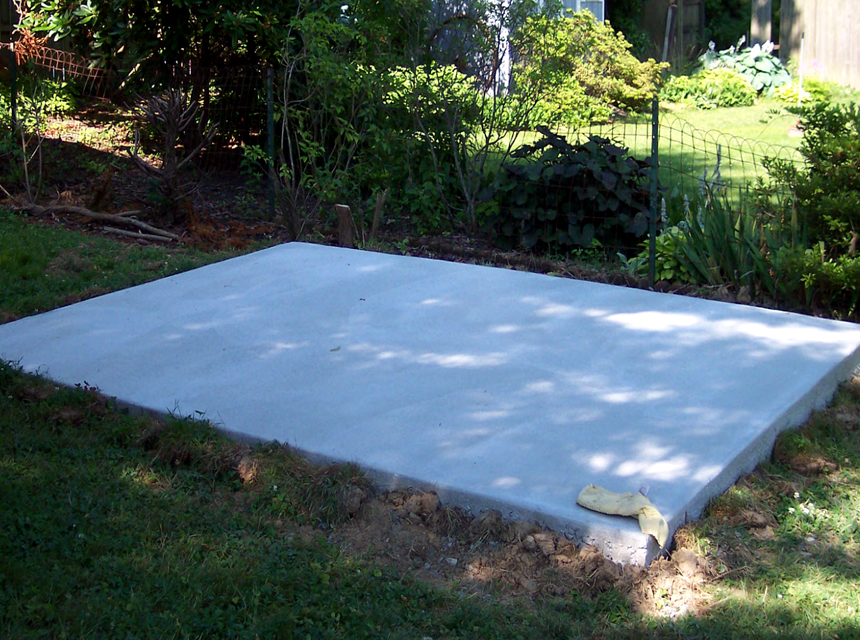
Lastly, there’s solid foam. With this, you don’t have to worry about killing and removing the grass where you want the pool to be. You can lay the polyurethane or polystyrene foam directly on top without issue. That said, it should be a little more expensive than most other choices listed above.
Your pool pump also needs to be on level ground. However, if you place it on dirt, moisture can accumulate beneath the pump and cause damage over time. Consequently, it’s advisable to use concrete instead.
The pump takes up very little space, so building level ground for it should be a cakewalk. Fortunately, we’ve found some of the best pool pumps for the different types of pools, so finding one that suits your needs shouldn’t be a problem.
Several varieties of pumps are also available for above-ground pools, including single-speed, two-speed, and variable-speed pool pumps. With variable-speed pool pumps being the best of the three, you may want to consider them for your pool.
One of the major benefits of level ground for the pool is that pressure is evenly distributed to all the walls of the pool. If it was lop-sided due to uneven ground, one wall would take most of the pressure and likely collapse.
Also, with level ground, the surface beneath the pool is less likely to move and cause a collapse. Lastly, the depth of the pool is uniform and less likely to be a problem for people new to swimming.
The only thing left after building level ground is to install or build the swimming pool. This includes adding and treating the water with the right chemicals before going in for a hot afternoon dip. Make sure you use the best pool shocks you can find to sanitize your water for extra safety.
